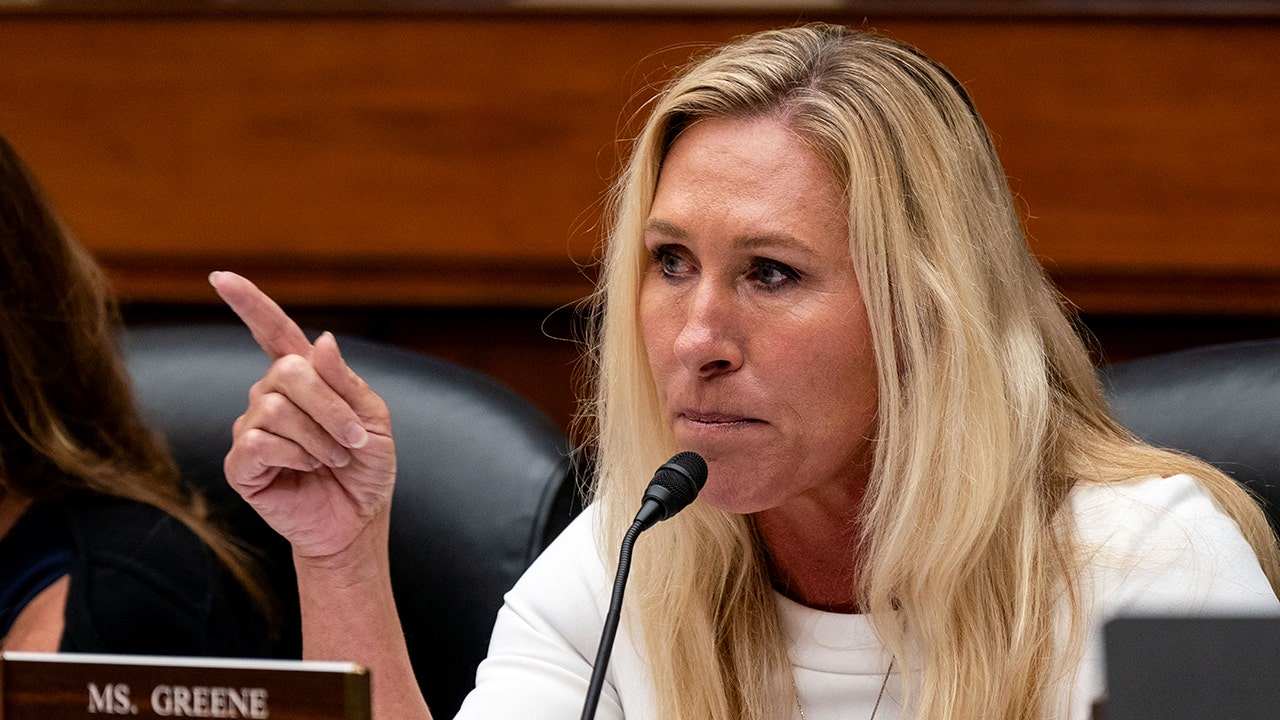Louisiana
Redfish to be stocked in Louisiana waters in first-of-its-kind program

Louisiana’s redfish population is in sharp decline, prompting the state to call for tighter catch restrictions on the highly sought-after species. Officials are now also opening the door to an additional tool that may or may not help: growing them.
The state is in the early days of allowing a small pilot program that will stock hatchery-raised redfish in one area of the coast. The program will be the first of its kind in Louisiana, though it has long been done in other states.
The aim is not to solve the population declines plaguing redfish, officially known as red drum, since stocking alone will not come close to doing the trick, state officials say. But the pilot, being conducted at no cost to the state, will help determine if a larger program can help.
If experience elsewhere is any guide, an added benefit may come in the insights stocking can provide on redfish behavior and survivability through the use of genetic testing, which will be employed in the pilot.
A first step will be determining if any of the stocked fish survive and if they can be detected in the overall population, said Patrick Banks, assistant secretary at the state Department of Wildlife and Fisheries.
“It’s not an effort that we think is going to rebuild the redfish population,” Banks said, stressing that reductions in catch limits are needed. “But this has been a request in front of us for quite some time, and we just felt like it was the appropriate time to at least test the method.”
The plan is to start with 10,000 fish raised in a hatchery, then stocked in Calcasieu Lake in southwest Louisiana, near Lake Charles. It will likely be next year before the fish hit the open water, with the program’s managers in the process of lining up logistics, including which hatchery they will use.
The parent fish, or brood stock, must come from the same area where the fish will be stocked to ensure the genetics match. Testing will also be required for diseases before the fish are transferred to the wild.
Calcasieu Lake was selected because it is relatively more confined than the mazes of marsh, canals and bayous that define other parts of coastal Louisiana, hopefully improving the chances that more of the fish will be located later, said Banks.
‘A big event’
The program will be run by the Recreational Fisheries Research Institute, a Covington-based nonprofit directed by Randy Pausina, who formerly held Banks’ job as the state’s head of fisheries. It is also partnering with the conservation group CCA Louisiana.
Pausina will be seeking sponsorships and grants to pay for the effort, though he said it’s too early to say what the total cost will be.
Randy Pausina
To start, four female and two male adult redfish will be needed as parents. They’ll likely be caught with rod and reel during the spawning season in the fall, said Pausina, then brought to the hatchery, likely in Texas.
That will lead to a first group of fingerling fish, possibly in the range of 4 to 6 inches when they are stocked, he said. Pausina described an effective stocking program as insurance in case of sudden and dramatic declines in a species’ population.
“Louisiana has a long history of freshwater stocking but has never stocked a marine sportfish species,” Pausina said. “This is a big event.”
The program does not require federal approval, but the National Oceanic and Atmospheric Administration noted that a range of states use saltwater stocking as a tool that “can help supplement and rebuild wild stocks depleted by overfishing, habitat loss or other factors.”
There hadn’t seemed to be much need for such a program in recent years, said Banks. Louisiana’s delta has traditionally provided extraordinary habitat for all sorts of marine life, redfish included, though much of those fertile coastal wetlands are in the process of disappearing.
The wild and crazy days of the 1980s, when stocks plummeted and Paul Prudhomme’s blackened redfish recipes caused a nationwide sensation, were addressed with a ban on commercial fishing and tighter recreational restrictions.
But experienced anglers along Louisiana’s coast again began seeing troubling signs more recently. Redfish, so plentiful for so long, were simply becoming much harder to catch. Research by state biologists released in December backed up those anecdotal impressions, documenting a worrying slide in the redfish population.
In response, the state’s Wildlife and Fisheries Commission has proposed tighter catch limits. The proposal is undergoing a public comment period, and if state legislators do not block it, the changes could take effect as early as December. Louisiana’s limits are significantly looser than those of other Gulf Coast states.
Stocked fish could potentially supplement the native population, while keeping in place safeguards and oversight to ensure genetic changes do not occur — one concern that will have to be continually monitored. Its potential is limited, state officials say.

Angler Kevin Roberts holds up fish he caught with his fishing partner Chance Angel.
‘Helped us learn’
The new program will use genetic sampling to trace the fish, rather than the older method of applying a physical tag to each one. A portion of a fin could be clipped, then tested to determine if it is one of the stocked fish or a descendant, said Kyle Piller, a biologist at Southeastern Louisiana University who will be handling testing for the program.
The samples could be taken on a volunteer basis by recreational anglers or by state biologists during their sampling efforts. Pausina’s organization already runs fish-tagging programs.
Piller said a return rate of anywhere from between 15% to 25% of hatchery fish in the samples would constitute a success.
Rebecca Triche, who directs the Louisiana Wildlife Federation, said her organization would have to look more closely at the program, but she agrees that stocking cannot replace the use of other tools, like tighter catch limits.
South Carolina has stocked redfish since the 1980s, said Aaron Watson, a scientist with that state’s Department of Natural Resources. The amount of stocked fish released varies each year, but the number has averaged around one million, he said.
Recent sampling there showed about 1.9% of the sampled adult redfish population were hatchery fish, he said. The numbers are much higher among 1-year-old redfish, though they tend to range widely. A typical percentage for larger estuaries has been between 10% and 20% of the sampled 1-year-old redfish being from hatcheries in those areas, said Watson.
Redfish live long lives. They become adults at around 4 or 5 years old, but can survive until they are 45 to 50, said Watson.
South Carolina has considered the program a success, not only because of its ability to supplement the population, but also because of the scientific research it provides, he said. Using genetic sampling, biologists can trace fish movements and survival through varying conditions, including from hurricanes.
“We’ve been able to use unique genetic families in our stocking designs to help us answer questions about the life history of red drum, or about different ecosystems, different environments, different estuaries within the state,” Watson said. “So it’s helped us learn not only a lot about how to continue a stocking program to help support the recreational fishery, but also about the natural population and our natural ecosystems here.”

Louisiana
Army Black Knights, Louisiana Tech Offensive Stars To Watch in Independence Bowl

The Independence Bowl will be a game of offensive contrasts as the Army West Point Black Knights face the Louisiana Tech Bulldogs on Saturday at Independence Stadium.
Kickoff is set for 9:15 p.m. eastern on ESPN.
Army (11-2) enters the game using its run-based attack based on option, deception and power football. If the Black Knights don’t have 34 or 35 minutes of time of possession by game’s end, then they haven’t done their job. Army can create big plays, but the Black Knights would rather grind its opponents down to submission.
Louisiana Tech (5-7) runs a pass-based, Air Raid offense that coach Sonny Cumbie learned from one of his coaches and mentors, the legendary Mike Leach. The former Texas Tech quarterback doesn’t have the talent he needs to make it as effective as the Red Raiders’ glory days offensively. But, he’s found a quarterback that could help get him there in the coming years — if the Bulldogs can hang onto him.
This is the transfer portal era after all.
Here are three offensive players to watch for each team going into Saturday’s contest.
QB Bryson Daily
Daily was the American Athletic Conference offensive player of the year and was sixth in Heisman Trophy voting. He is the focal point of this offense. He’s rushed for 1,532 yards and 29 touchdowns (tied for most in FBS) and has thrown for another 942 yards with nine touchdowns and four interceptions. If LA Tech wants to win, it has to slow him down. Look at the Navy tape for a template.
RB Noah Short
With Kanye Udoh’s transfer to Arizona State, the bulk of the complementary backfield work may fall to short, who was the Black Knights’ third-leading rusher this season. He rushed for 542 yards and two touchdowns but gained more yards per carry (7.7) than Udoh (6.2).
This is Daily’s swan song so he’ll get plenty of work. But Short needs to be a solid complement. He’s also one of Army’s top passing targets with 17 catches for 318 yards and three touchdowns.
WR Casey Reynolds
Reynolds leads the Black Knights with 19 receptions for 444 yards and three touchdowns. When Daily looks for a big play down the field, count on Reynolds to be the receiver he’s looking for. It’s been that way all season.
QB Evan Bullock
He finally emerged with the starting job in late September and the freshman ended up with 1,938 yards, 14 touchdowns and two interceptions as he completed 67% of his passes. That’s a solid start in an offense that requires quick passing and high accuracy. Bullock has both, but he’s also been sacked 31 times.
RB Omiri Wiggins
The running game can be afterthought in an Air Raid offense. But Wiggins is coming off a huge game in LA Tech’s finale, as he rushed for 129 yards and three touchdowns and three interceptions against Kennesaw State. That was more than a quarter of his output this season (487 yards, four touchdowns).
WR Tru Edwards
The senior is from Shreveport, La., so this is like coming home. And he’s had a huge year for the Bulldogs. Edwards is their leading receiver by a significant margin, with 77 receptions for 897 yards and six touchdowns. He’s caught 25 passes in his last three games but hasn’t found the end zone.
Louisiana
Letters: State should invest in training mental health providers

Most of Louisiana is classified as a mental health professional shortage area, leaving countless families — especially children —without access to critical mental health services. According to the National Survey of Children’s Health, over half of children in Louisiana who experience mental health challenges do not receive the care they need. This is a staggering number given that this study estimates that 30.3% of children ages 3-17 have at least one emotional, developmental or behavioral health disorder. This unmet need has far-reaching consequences, affecting school performance, family stability and community safety.
Addressing this gap starts with investing in higher education programs that train the mental health professionals our state desperately needs. Universities such as the University of Louisiana Monroe, Louisiana State University Shreveport, Louisiana Tech University, Grambling State University, the University of Louisiana at Lafayette, McNeese State University, Northwestern State University, Southeastern Louisiana University, University of New Orleans, University of Holy Cross, Tulane University, Nicholls State University, LSU and others play a vital role in preparing skilled counselors, psychologists and social workers.
However, the current capacity of mental health training programs is not sufficient to meet the growing demand. We are facing another potential budget shortfall in Louisiana that could impact higher education. Without adequate funding and resources, these programs may struggle to equip students with the expertise and experience required to enter the workforce.
Investing in these programs is not just about addressing today’s challenges — it is about safeguarding the future of Louisiana. By increasing the number of trained mental health professionals, we can improve outcomes for children and families, reduce the strain on emergency services and foster healthier, more resilient communities.
It is time to prioritize the mental health of our state by supporting higher education programs that make a difference. Together, we can build a brighter, healthier future.
MATTHEW THORNTON
chief executive officer, Center for Children and Families, Inc.
Louisiana
Stabbing death reported at Louisiana prison

(KTAL/KMSS) – A dispute that resulted in an inmate’s death is under investigation at a Louisiana state prison, according to the Department of Corrections.
DOC Director of Communications Ken Pastorick said the incident happened at Southern Correctional Center in Tallulah, Louisiana, and caused the death of Teldric Boyd, 31.
A new release said that around 3:25 a.m. on Monday, Boyd was allegedly stabbed in the neck with a shank by fellow inmate Austin Dean, 33. Correctional center staff is said to have immediately responded and rendered first aid, and then Boyd was brought to a local hospital, where he died at 5 a.m.
More Louisiana News
Madison Parish Sheriff’s detectives booked Dean, who they say admitted to stabbing Boyd after an argument the two men had Sunday night.
Boyd was serving a 14-year sentence for various convictions, including racketeering, aggravated battery, two counts of a felon in possession of a firearm, and drug offenses in Rapides Parish.
Dean was serving a 25-year sentence for manslaughter in Rapides Parish and a five-year sentence for aggravated assault on a peace officer; those sentences are to run consecutively.
The investigation is ongoing.
Copyright 2024 Nexstar Media, Inc. All rights reserved. This material may not be published, broadcast, rewritten, or redistributed.
For the latest news, weather, sports, and streaming video, head to KTALnews.com.
-
/cdn.vox-cdn.com/uploads/chorus_asset/file/24924653/236780_Google_AntiTrust_Trial_Custom_Art_CVirginia__0003_1.png)
/cdn.vox-cdn.com/uploads/chorus_asset/file/24924653/236780_Google_AntiTrust_Trial_Custom_Art_CVirginia__0003_1.png) Technology5 days ago
Technology5 days agoGoogle’s counteroffer to the government trying to break it up is unbundling Android apps
-

 News6 days ago
News6 days agoNovo Nordisk shares tumble as weight-loss drug trial data disappoints
-

 Politics6 days ago
Politics6 days agoIllegal immigrant sexually abused child in the U.S. after being removed from the country five times
-

 Entertainment6 days ago
Entertainment6 days ago'It's a little holiday gift': Inside the Weeknd's free Santa Monica show for his biggest fans
-

 Lifestyle6 days ago
Lifestyle6 days agoThink you can't dance? Get up and try these tips in our comic. We dare you!
-

 Technology1 week ago
Technology1 week agoFox News AI Newsletter: OpenAI responds to Elon Musk's lawsuit
-
/cdn.vox-cdn.com/uploads/chorus_asset/file/25672934/Metaphor_Key_Art_Horizontal.png)
/cdn.vox-cdn.com/uploads/chorus_asset/file/25672934/Metaphor_Key_Art_Horizontal.png) Technology1 day ago
Technology1 day agoThere’s a reason Metaphor: ReFantanzio’s battle music sounds as cool as it does
-

 News2 days ago
News2 days agoFrance’s new premier selects Eric Lombard as finance minister


















